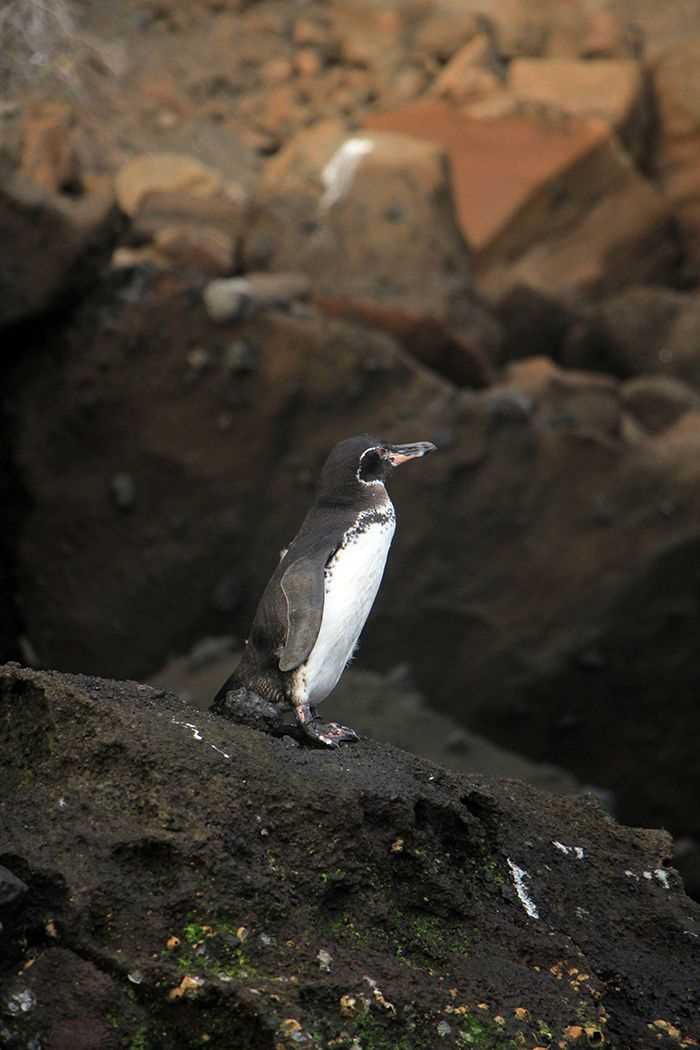Named after Queen Isabel, this island is the largest in the Galapagos Archipelago. It is made up of volcanos, which are still very active, erupting as recently as last year. Urbina Bay is our landing site, with a black sand beach where turtles annually lay their eggs. The area is vast and heavily vegetated due to its rich volcanic soil, producing many sources of food, safety, and nesting sites for birds. It also creates areas of shade and nesting sites for reptiles like giant tortoises and land iguanas. During our outing, we saw a variety of land birds, as well as a several tortoises and land iguanas.
After an eventful hike full of wildlife sightings, our last stop was the beach where we had the chance to take a dip to cool off, or to explore the rich underwater life in this area. The turtles and penguins were especially entertaining.
The afternoon was no less exciting, with many options available, including kayaking, paddle boarding, and Zodiac cruising. Later, we went snorkeling in search of penguins, flightless cormorants, turtles, and many varieties of fish.
To continue with the expedition, we went for an invigorating hike to view Darwin Lake. This walk offers many chances to see wildlife, including sea birds, marine mammals, fish and more. Some went for a Zodiac ride, where they had excellent sightings of penguins, cormorants, pelican, boobies and more.
It was a fantastic day of exploration, and we all returned to National Geographic Endeavour II with smiles on our faces.







